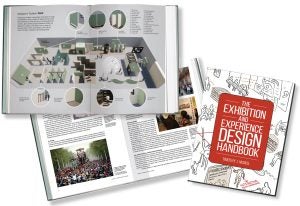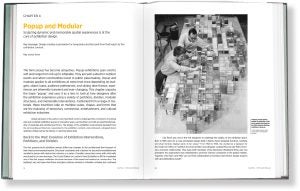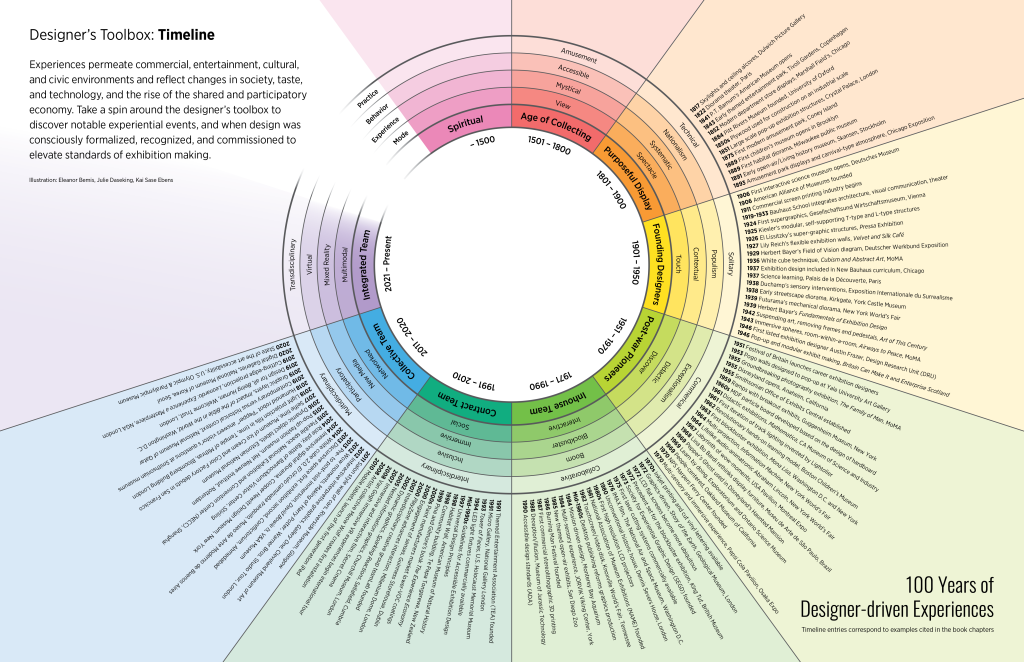 BOOK OVERVIEW
BOOK OVERVIEW
Based on my research and expertise as an exhibition designer, educator, and critic, this is the first title to simultaneously
- explain how to design exhibitions and attractions successfully;
- contextualize contemporary exhibition design practice through its historical and theoretical underpinnings;
- elevate understanding of one of the most rapidly evolving and trans-disciplinary creative disciplines;
- illuminate exhibition design’s contributions to the expanding global market for civic, cultural, commercial and entertainment experiences; and
- reframe the exhibition design process using a set of recurring tropes and the methods they employ, making this book distinct from other practice-based, museological or commercially-driven titles.
This full-color book with over 250 photographs and drawings uses real-world examples, museum and exhibition design studio profiles, historical and contemporary voices, and draw on my own creative practice and exhibition making experience, as well as invaluable contributions from my network of international museum, attraction, and design professionals.
I introduce a new methodology for understanding exhibition and experience design. One that elevates understanding of one of the most rapidly evolving and trans-disciplinary creative disciplines. Twelve easy-to-follow illustrated chapters introduce a set of reoccurring exhibition design conventions or “tropes” that are omnipresent in exhibition making and can be used to chart a new methodology for understanding exhibition design and its process.
BOOK CONTENTS
INTRODUCTION
Timeline and overview of exhibition design and the experience making process.
———————-
CHAPTER 1: Streaker, Stroller, Studier
Key message: design facilitates the participation of everyone in the exhibition experience
The trope “streaker, stroller, studier” frames the designer’s responsibility during the exhibition development process to understand audiences, plan welcoming and engaging environments, and interpret content in an informative and accessible manner.
———————-
CHAPTER 2: Once Upon a Timeline
Key message: design serves to structure, sequence and bring to life an exhibition story
The trope “once upon a timeline” illustrates how designers’ structure, sequence, and bring to life an exhibition story, and how chronology is used repeatedly to organize and design experiential narratives.
———————-
CHAPTER 3: Exit Through the Gift Shop
Key message: design considers and tackles the comprehensive exhibition journey
The trope “exit through the gift shop” explores the comprehensive exhibition journey and the collaborative contribution the designer makes to market an entire experience and shape its visual message and identity.
———————-
CHAPTER 4: Popup and Modular
Key message: design creates a permanent or temporary architectural form that reacts to the exhibition content
The trope “popup and modular” assembles examples by designers who sculpt the exhibition experience from a variety of modular and memorable interventions made from a range of materials that take a multitude of forms.
———————-
CHAPTER 5: “Wow” Moment
Key message: design is responsible for the emotional and behavioral reactions of the exhibition audience
The trope “wow moment” shows how designers are responsible for people’s emotive reactions and their behavioral responses to a variety of experiential triggers such as scale, color, lighting, and placement.
———————-
CHAPTER 6: Beyond the White Cube
Key message: design creates the cohesive flavor and atmosphere of the exhibition experience
The trope “beyond the white cube” visualizes how designers create cohesive flavors, atmospheres, and sensorial qualities for exhibition experiences, and react to the context and origins of the material to be presented.
———————-
CHAPTER 7: Hanging Salon Style
Key message: design advocates for the visual variety and arrangement of the exhibition elements
The trope “hanging salon style” sets the stage for how designers add visual variety, arrange elements, and draw on complex compositional design theory to engage people in exhibitions and experiences.
———————-
CHAPTER 8: Trapped in Glass Boxes
Key message: design responds proactively to the constraints inherent in creating a safe exhibition environment
The trope “trapped in glass boxes” is a metaphor for the variety of constraints designers work with to plan exhibitions and experiences, display objects, and create safe, people-centered environments.
———————-
CHAPTER 9: Wraparound Worlds
Key message: design captivates an exhibition audience and facilitates an experience that is not everyday
The trope “wraparound worlds” reveals how designers create immersive experiences and are reinventing the tools to deliver on people’s innate desire for escapism and alternative realities.
———————-
CHAPTER 10: Smoke and Mirrors
Key message: design inspires and transforms exhibition audiences
The trope “smoke and mirrors” demonstrates how designers deploy deception, illusion, and a little bit of magic to surprise and inspire people and transform experiential encounters.
———————-
CHAPTER 11: Tombstones and Texts
Key message: design makes exhibition messages clear, communication direct, and visuals pop
The trope “tombstones and text” indicates the importance of clear but engaging communication, and how designers bring visual clarity, cohesion, accessibility, and consistency to exhibition graphics.
———————-
CHAPTER 12: Hands-on, Minds-on
Key message: design encourages learning using engaging and interactive exhibit techniques
The trope “hands-on, minds-on” demonstrates that learning through doing requires a range of passive to interactive modalities that designers use to inform, engage, and educate a diverse and global community.
———————-
AFTERWORD: Call to Action
Key message: a methodology for measuring the experiential impact of an exhibition
———————-
BOOK DESIGN
 Chapter visualizations summarize each of the tropes technical design methods. Called the Designer’s Toolbox they are created by a group of diverse designers working all over the world.
Chapter visualizations summarize each of the tropes technical design methods. Called the Designer’s Toolbox they are created by a group of diverse designers working all over the world.
 Each chapter is defined by a key message, word, and summary paragraph. Headings and sub-headings help to quickly introduce sections. Over 250 photographs and illustrations illuminate the book’s themes.
Each chapter is defined by a key message, word, and summary paragraph. Headings and sub-headings help to quickly introduce sections. Over 250 photographs and illustrations illuminate the book’s themes.
 36 case studies—3 per chapter—deconstruct the methods and principles inherent in each trope. They break down into design challenge, solution, and impact and illustrate how the tropes have remained constant over a span of 100 years.
36 case studies—3 per chapter—deconstruct the methods and principles inherent in each trope. They break down into design challenge, solution, and impact and illustrate how the tropes have remained constant over a span of 100 years.
 Tips & Tricks offers practical advice about implementing the ideas in each chapter. Notes cite sources and interviews and serve as an additional bibliography.
Tips & Tricks offers practical advice about implementing the ideas in each chapter. Notes cite sources and interviews and serve as an additional bibliography.
